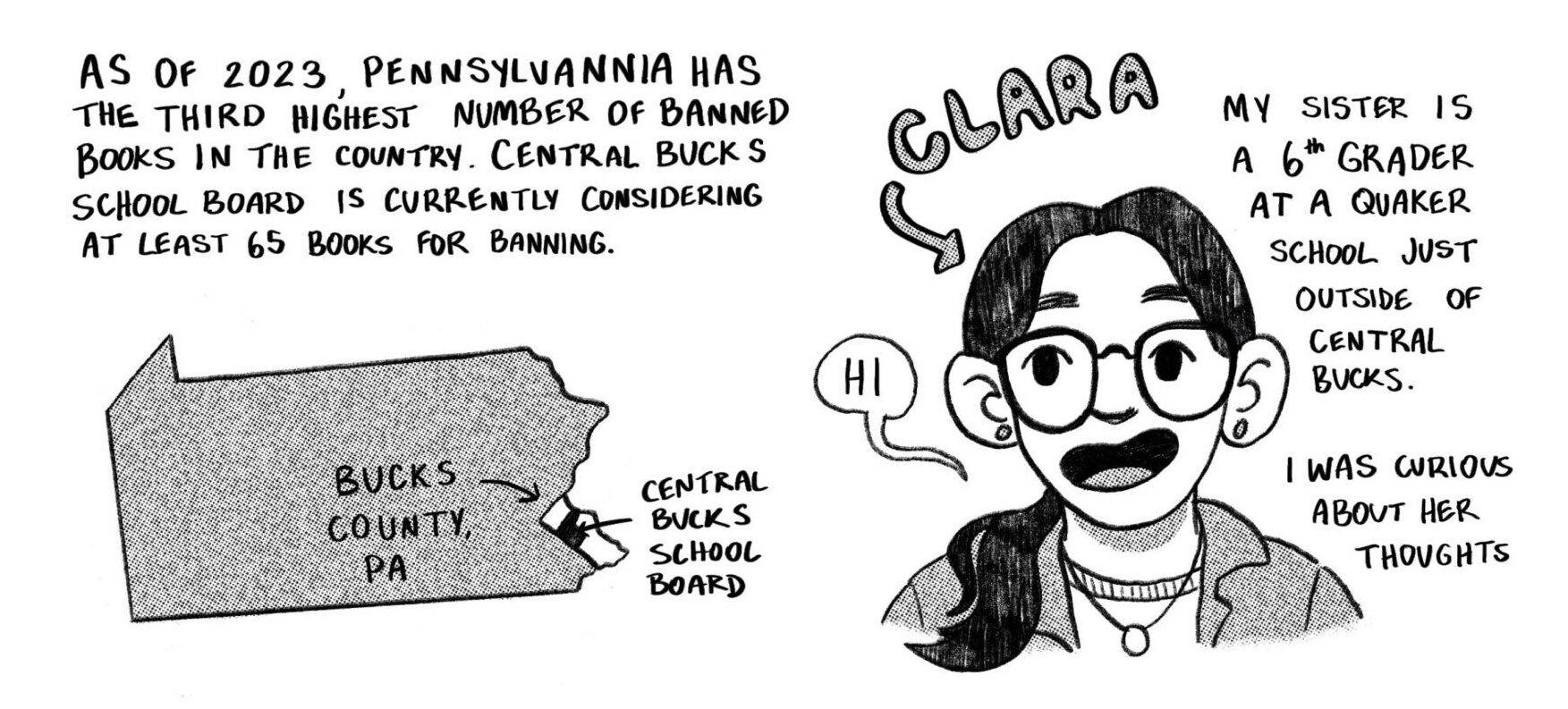How seriously can you take comics?
A student poll
Born from the back pages of newspapers, comics as we know them today were designed to be a novelty to supplement ‘real’ articles. Since then, the ‘comic book’ and the ‘graphic novel’ have taken shape, and many comic artists claim that this form of pictorial literature deserve serious attention. Are comics an art form worthy of either the Pulitzer Prize or a place at the Whitney Biennial?
Here are some of your responses …..
If the audience that you are trying to reach with your art is an audience that will never step foot into a gallery, than the comic book is an ideal format–more ideal than what is on display at the Whitney.
–Angee Lennard
Of course they are important, you squirming pile of Art Krummian flesh! They will take over the world, you filthy, filthy, humans!
–Chris Sullivan, FVNM
Funny to come home to this question after buying comics at Graham Crackers today. Comics are very important. Without a doubt it is an art form, one that unites words and illustrations thus bringing life to the page they are printed on. Why original comic art doesn’t dawn the halls of the Whitney I don’t know (but I’m sure there is some stashed in the basement). For me it’s always been the art. The covers, the panels, but the story was lame, so what, didn’t matter because there’s the one panel that has the guy getting his head blown off. You just can’t find that in your mother’s Whitney.
A lot of independent press today is brilliantly done, and I think this is part of what’s bringing comics to rise. Independent comics have been around, but I think they have built up quite an audience over the years. The stories and ideas seem to be focused on more than the art, so in some cases you get some amazing-looking art work, in other cases it’s crap, but so what, doesn’t matter because there’s that one panel where you discover what’s bugging the squiggly line. The artist is usually behind the whole project, the writing, design, and illustrations. This way the reader is connected to the artist, and how could that not be interesting? How could it not be art?
The same usually goes for newspaper comics, but due to how short they are, they become more disposable. OK, here’s your gag, or fraction of a story for today, tune in tomorrow. Take a look at the recently published collectives of the Peanuts strips. When you read them all in a row you pick up on what Charles Schulz had in mind that week, or the entire month. You connect with him and his emotions (mainly through Charley Brown), and you figure out what he experienced in life. I’d like to think he didn’t think much of what he was doing, or how many people were reading, then half way through his career looked back, realized he did a few hundred thousand strips, said a quick “My god!” sat for a minute, shrugged, then started on the next hundred thousand. Comics are important, and it doesn’t take the Whitney to make it art, it takes places like Graham Crackers, newspapers, and the readers to do that job.
–Matt Taylor
I have always considered comics a serious form of art making and expression. I think that the comic book has had difficulty establishing itself as valid and important form of art (or literature). It is interesting because at the same time, this stigma has been key in the evolution of the comic book and has actually been pivotal in re-defining of the modern graphic novel.
Comic book artwork, story line, character development, as well as the audience of this genre has become significantly much more sophisticated over the past fifteen years. Labels such as Dark Horse, IDW, Vertigo, as well as many other independent comic publishers specialize in heavy, content-driven subject matter and powerful, highly expressive imagery. Even in your mainstream lines such as DC or Marvel, it is not uncommon for super-powered archetypes in capes and spandex to be addressing such topics as terrorism, drug-abuse, or racism, and that is usually just the first five pages.
If you just look around, our society is up to its eyeballs in comic book iconography and influenced media from both the East and West. I think that comics are an art form unto themselves, and placing such items into the context of a gallery might kill the intention. Comics are intimate devices that trigger genuine reaction about the human condition. They provide a unique and strangely tactile arena of metaphor to project oneself, as well as examine the collective notions and desires that we all share. I selfishly hope that those rumors about interdisciplinary studies in sequential art become a reality at SAIC.
I strongly recommend the following: 1.) Arkham Asylum by Grant Morrison and Dave McKean, 2.) Stray Toasters by Bill Sienkewiecz, 3.) Plastic Forks by Ted McKeever, and 4.) League of Extraordinary Gentlemen (vol. 1 + 2) by Alan Moore and Kevin O’Neill.
–Scott Ramon, Director of Undergraduate Admissions
Of course comics are important. From Winsor McCay to Stan Lee to Garth Ennis, those who write and produce comics have done more than their part to shape pop culture, and that’s no easy task. The effort that goes into writing, drawing and publishing a comic is incredible. In my opinion, the comic (both strip and book) are highly underrated and overlooked forms of art. It may be a lot of work standing in front of an easel mixing just the right shade of green, but writing, drawing, inking, coloring and laying out 24 pages is a herculean effort in comparison.
–Brian Bolles
Art by Shellie Fiocca
March 2005





















